
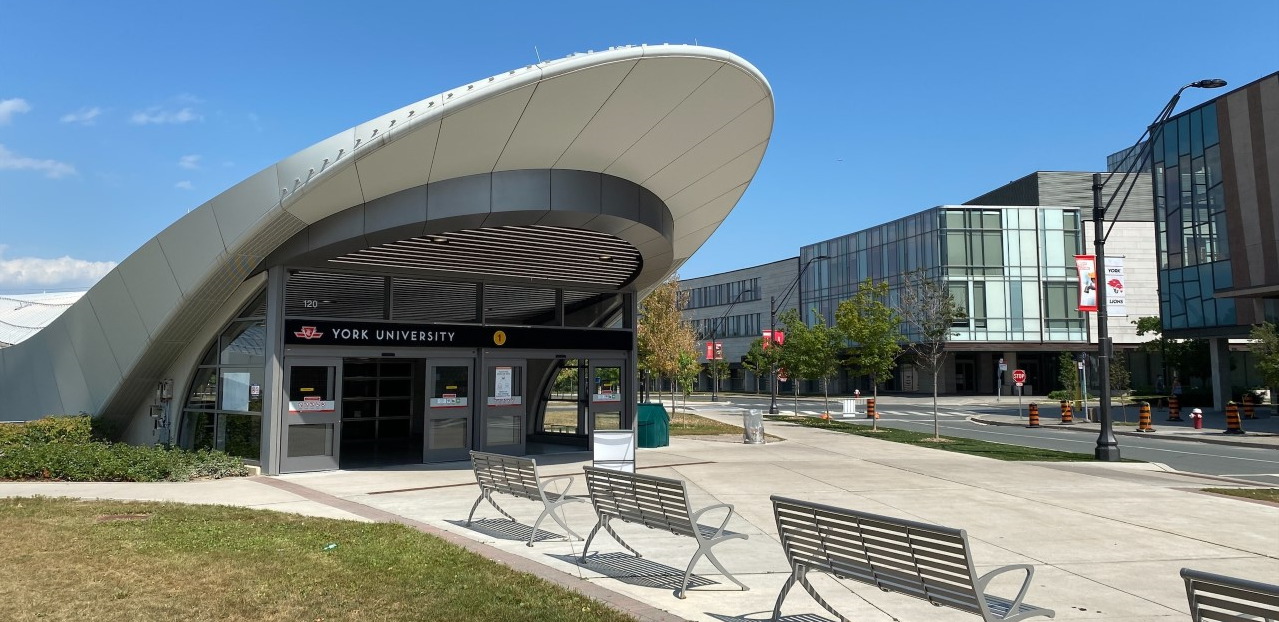
The following is a repost of a September 21st Metrolinx Blog post:
The lecture halls of York University’s Schulich School of Business, are best known as places where future generations of business leaders learn the latest practices and trends. But a recent sound test there recently proved there’s also a case study in modern, industry-leading subway construction practices right underneath them.

Metrolinx is using the latest sound and vibration technology to plan and design the Yonge North Subway Extension. This will keep things quiet when future service is up and running. A recent visit to Schulich put these innovations to the test.
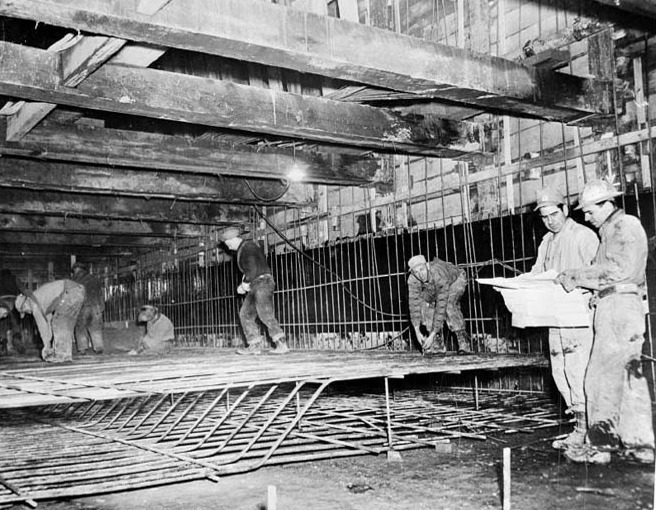
Metrolinx recently visited the campus with several guests who wanted to learn more about modern subway construction and experience this improved technology in action. The business school’s Seymour Schulich Building has a lecture hall sitting above the tunnels leading into York University Station, on Line 1. This section was completed in 2017 and incorporates up-to-date design standards and engineering solutions to reduce the noise and vibration of subway trains passing over the tracks. It’s a perfect place to see how technology has improved since the early days of subway construction.
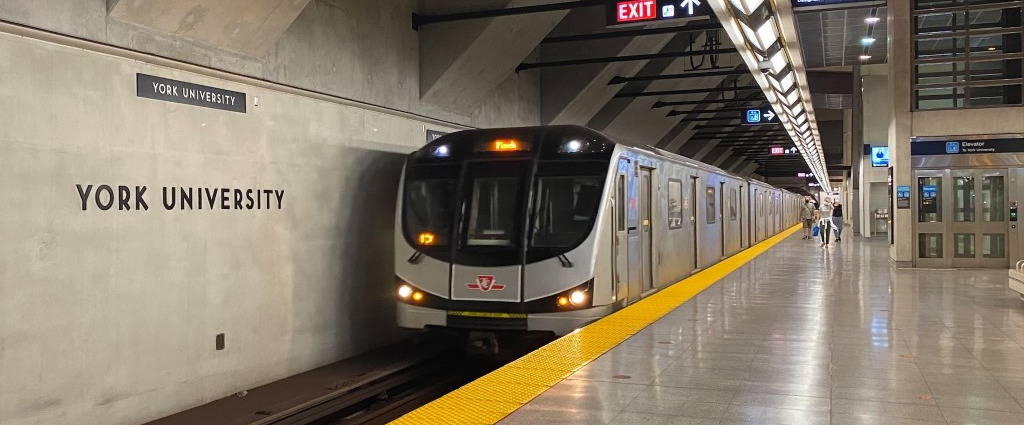
To test for any noise and vibration caused by the subways running underneath, the air conditioning and ventilation systems inside the lecture hall were switched off to make the room pin-drop quiet. Guests on the tour literally held their breath and reached to pat down their pockets, preventing any wayward jingling of keys. A sound level meter was powered up to so that the group could watch any changes in sound levels in real time.
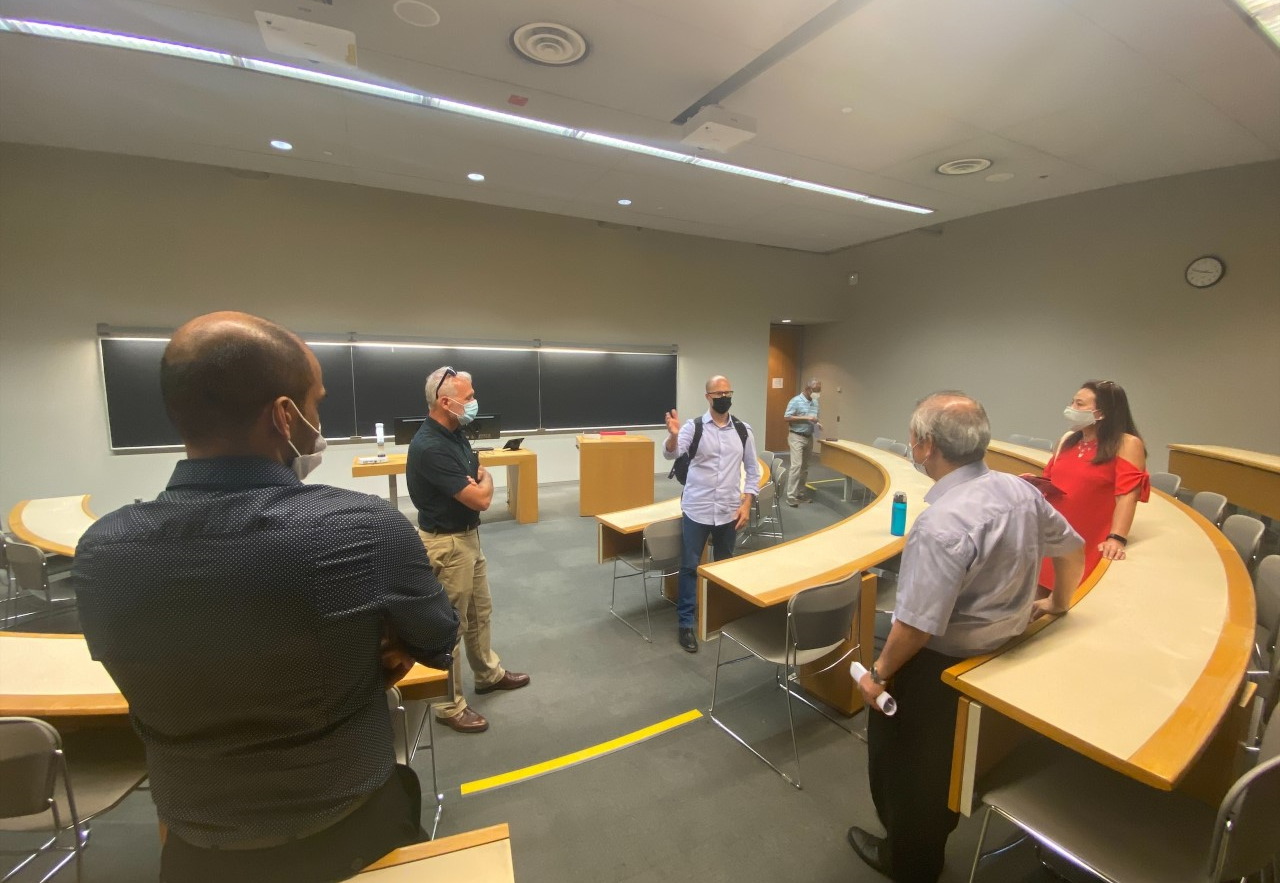
Even in the still silence of the lecture hall, only a faint, momentary murmur could be heard as trains passed directly below the lecture hall. The readout on the acoustic device barely budged from its baseline. Next, for a more challenging test, the group moved downstairs to the unfinished basement – and repeated the experiment in a room that felt like an echo chamber. The results were similar.
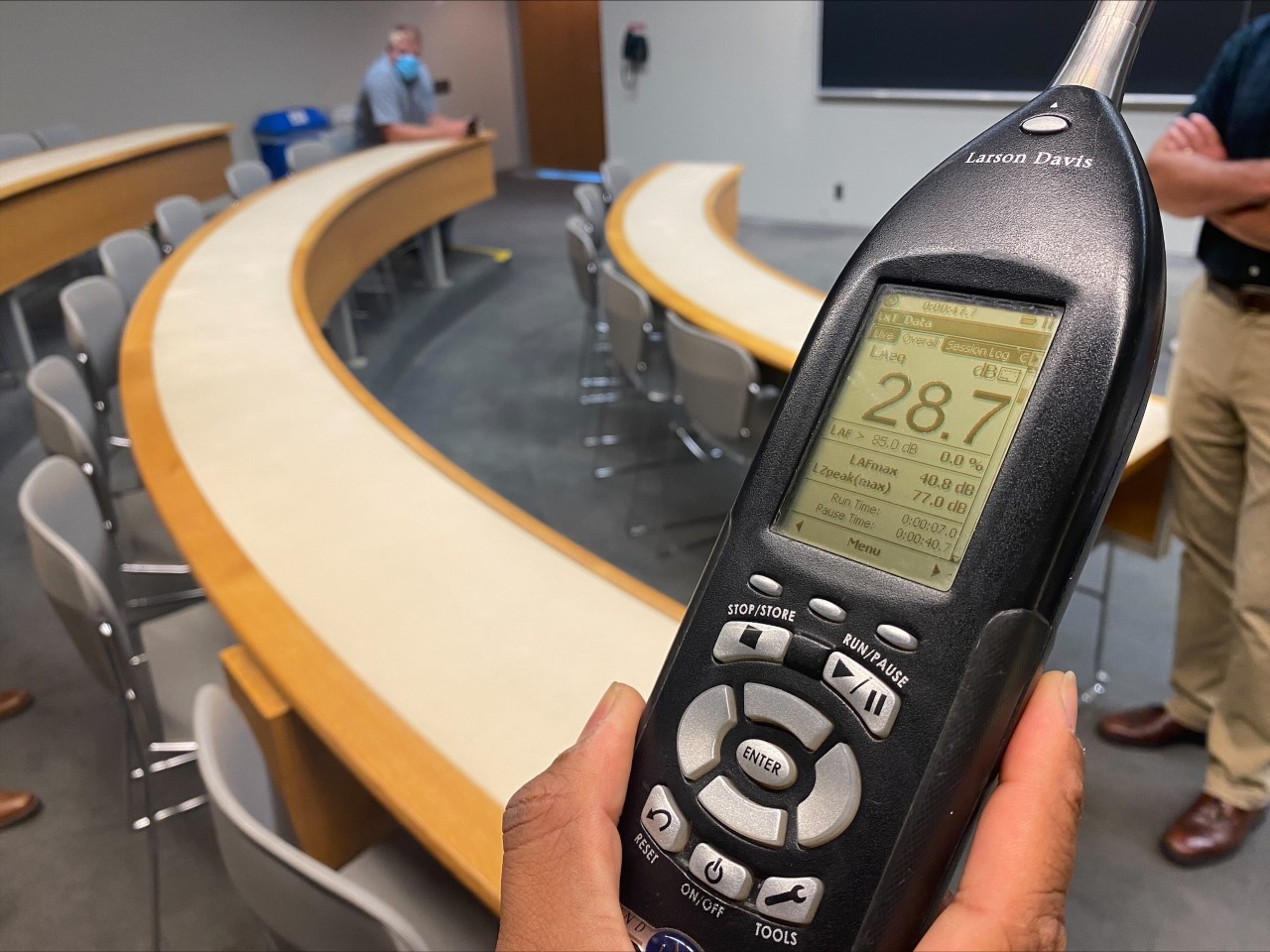
“Based on what we’re seeing here, we know the sounds and vibrations from subway trains traveling in the Yonge North Subway Extension’s tunnels will be practically imperceptible,” said Stephen Collins, Metrolinx program sponsor for the project. “In 2021, we have access to a wide range of solutions to address noise and vibration that just weren’t available decades ago, when a lot of our subway lines were built here in the GTA.”
One of those solutions is called ‘floating slab’ track. It is used extensively along the new part of the Line 1 subway, including the tunnels below Schulich. This method ‘floats’ the rails above the bottom of the tunnels by attaching them to large concrete slabs that are separated from the tunnel walls by thick rubber pads that look like oversized hockey pucks. The pads soak up the vibration from passing trains.

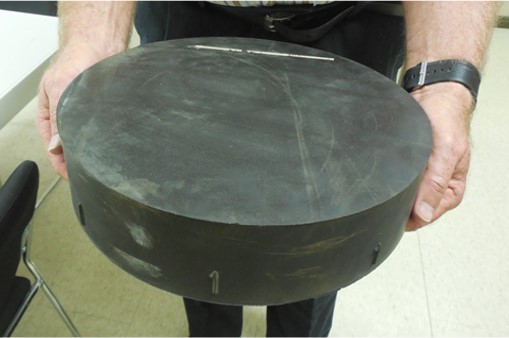
Collins explains that the underground structure for York University Station was built very close to the building that houses the Schulich lecture hall. The unfinished basement of the building, which will soon be used as a new lab, has concrete walls and ceilings that reflect more noise compared to most rooms in a typical residential home, which incorporate materials and finishes that are better at absorbing sound.
“That means any noise or vibration from a subway train passing below the basement would sound louder than it would if that subway was below an average house,” Collins said. This is encouraging because the levels here are extremely hard to notice.”
Early plans for the project put the bottom of the tunnels – where trains pass over the tracks – at least 20 metres (or 6 storeys) below the surface through the Royal Orchard community, which is similar to the depth below Schulich. This means the tunnels along the Yonge North Subway Extension will be much deeper underground than many sections of Toronto’s existing subway network.
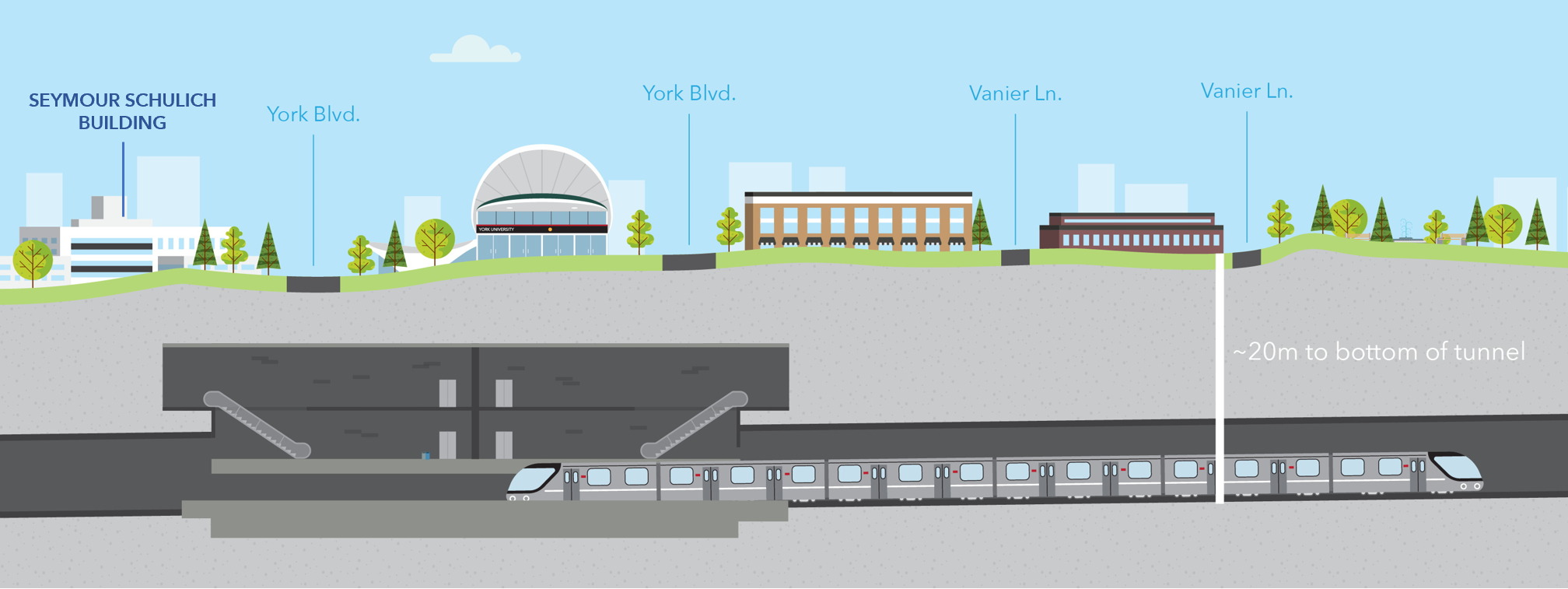
Experts at Metrolinx are looking at a host of modern noise and vibration solutions for the Yonge North Subway Extension, with the goal of making sure that when it goes into service, there are no significant differences in noise and vibration levels compared to today.
“We’ll use tested and proven solutions to make sure people who live along the subway extension will barely notice it,” says Collins.
Metrolinx is still exploring refinements and improvements to its initial plans for the project, looking at ways to build the subway even deeper and under fewer homes along the section of the route that leaves Yonge Street. Updated environmental studies will inform the exact noise and vibration solutions Metrolinx will use on the project. These will be discussed in future consultations and public open houses with community members.
The Yonge North Subway Extension will bring the TTC Line 1 subway to Richmond Hill, serving communities in Toronto, Vaughan and Markham as it extends eight-kilometres north from the TTC’s existing Finch Station. The extension includes four stops and will reduce travel times to downtown Toronto by as much 22 minutes.
You can stay up-to-the-minute on the latest developments on the project by following the Yonge North Subway Extension on social media:
Twitter: @YongeSubwayEXT
Facebook: @YongeSubwayEXT
Instagram: @YongeSubwayEXT
You can also learn more about the project and get in touch with project experts by visiting Metrolinx.com/YongeSubwayEXT and signing up for the Metrolinx e-newsletter.
Story by James Moore, Metrolinx senior communications advisor (read original post at the Metrolinx Blog)